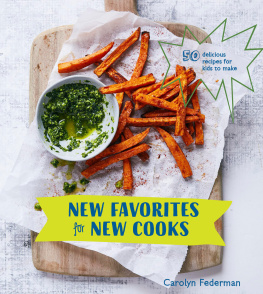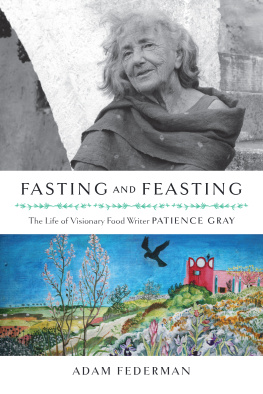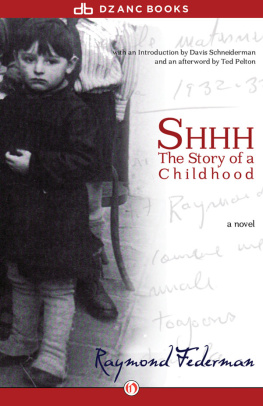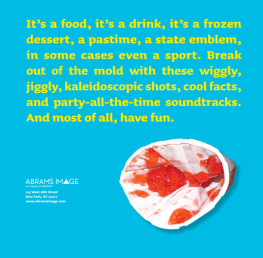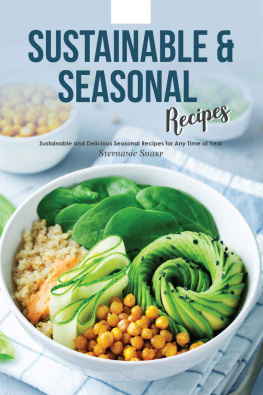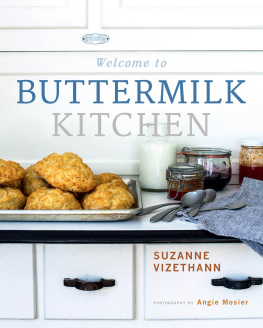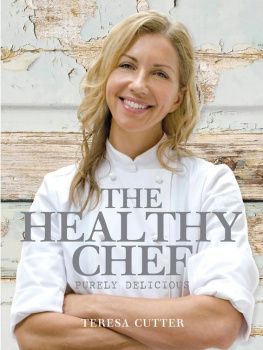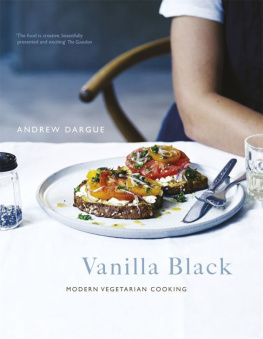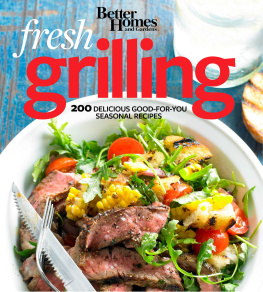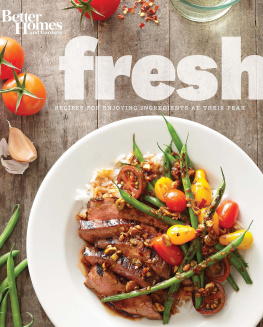ACKNOWLEDGMENTS
For Shelia, who disappeared into the refrigerator, with love.
Writing a book was so much harder than I thought it would be! I would never have been able to do it without my friends and family. Thanks first and foremost to Jasper and Romy for all of your feedback, patience, and excitement around this project and, most important, for being so much fun to eat with. You are my most proud accomplishment. Im deeply grateful to my parents, Irwin and Ceppie Federman, for always being the most enthusiastic cheerleaders in the room.
There would be no book without Jenny Wapner, who agreed with me that kids are capable of anything. Thanks to Jenny and the whole Ten Speed team for their support of the project, to Ashley Lima for the clever design, to Aubrie Pick for the beautiful photographs, and to Matt Jervis for the sweet line drawings.
Thanks to the many chefs who contributed your creativity, knowledge, and recipes to this book and to the Charlie Cart curriculum. For recipe testing and so much knowledge and know-how, a huge thank-you to Chelsea Nichols, Amalia Marino, and Carri Wilkinson. For recipe development and laugh-a-minute moral support, thanks to my pals Siew Chinn Chin and Charlene Reis, two of the most generous people I know, and to my new friend George Dolese for double- and triple-checking everything and making it all look so good. The biggest thanks is to Alice Waters and the crew at Chez Panisse, past and present, for staying true to your beliefs. You are a sanctuary in this nutty world.
Eric, Alex, and Jaime, great work on the book title(s)!! And thanks for always having my back. You three are all better cooks than I am any day (especially Alex, if were being honest). Mom would be proud of us.
For all other kinds of moral support, including eating the food and making me laugh, thank you to my smart and foxy friends Henni Yama, Sonia Fava, Joyce Cellars, Jill Martin, Daphne Beal, Seana Doherty, and Katrina Heron.
Most important, to the young people who so generously gave me their time to test these recipes and write up their feedbackgood and badyou have made your mark! This book includes all of your input, which you so thoughtfully conveyed to me. I am grateful to each and every one of you. A very special thanks to Arev Walker, who tested nearly every single recipe in the book with patience and moxie. My young recipe testers were:
Violet and Sam Bluestein
Elizabeth and Nicholas Bours
Ula and Elke Brucker
Calvin and Cora Day
Lila and Pablo De La Vega
Kalina Fairles
Ian Rock-Jones
Ella Kral
Jayshan and Arvin Parameswaran
Emmy and Davis Martin
Lulu Mead
Makenna and Caitlin Moore
Carla Fava Shmitt
Maia, Shea, and Aaron Stevens
Krithi De Souza
Knoa and Avi Tseng Jaffe
Our lovely and delightful chef/models were Jayshan, Arvin, Amar, Ella, Kalina, Ula, Grace, Gabe, Jaedyn, and Romy.
Last but never least, thanks to Noah Fairles, Nolan Darius, Jaedyn Tang, and Jasper, Romy, Juno, and Matt Jervis for happily eating leftovers with no questions asked.
CAROLYN FEDERMAN is the founder of the Charlie Cart Project, a nonprofit that provides tools and curriculum for food education in schools. Prior to Charlie Cart, Carolyn worked in food education for more than a decade, leading Alice Waterss Edible Schoolyard Project, consulting on policy and program development for the Jamie Oliver Food Foundation, co-founding the Berkeley Food Institute, producing UC Berkeleys Edible Education course with Michael Pollan, and teaching cooking in her childrens schools. Carolyn lives in Berkeley, California, with her two teenagers.
TOOLS (THAT YOU WILL NEED TO USE THIS BOOK )
This may seem like a long list but Im guessing you already have most of these things in your kitchen. You dont need to go out and buy special equipment to cook, but you do need a few basics like a knife and a cutting board. If the recipe asks for something you dont have, you might want to borrow from a neighbor or friend. And see for a refresher on knife skills.
SHARP TOOLS
Box Grater A four-sided grater with different-size openings on each side. Choose the large openings for grating cheese or carrots, and the smallest openings to zest citrus or grate hard cheese such as Parmesan. To use the box grater, hold the handle firmly with one hand, and grate the ingredient with the other, starting at the top of the grater and moving downward in one even stroke. Do not take your eyes off the graterthe holes are very sharp. Stop about inch before the end of whatever youre grating in order to protect fingers from getting cut.
Bread Knife A long serrated knife used for cutting bread, baked goods, and tomatoes. Serrated means the blade is jagged, not smooth, and has more grip on the food. Serrated knives are best for cutting tomatoes because the jagged edge can catch and break the smooth skin, while a smooth blade can slip.
Chefs Knife An all-purpose, straight-edged knife, usually 6 to 10 inches long, used for chopping, mincing, or thinly slicing virtually any food.
Handheld Grater A one-sided grater with a handle. Smaller openings make this perfect for zesting citrus or for grating hard foods, such as Parmesan cheese.
Paring Knife A short knife with a 2- to 4-inch blade, used for trimming vegetables and fruits.
Vegetable Peeler Peelers remove skins from vegetables like carrots, cucumbers, and potatoes. The stainless-steel blade can be very sharp. To use the peeler safely, hold it firmly by the handle and move the blade along the vegetable in one even stroke, away from your body. Hold the produce down on a cutting surface as you work.
OTHER TOOLS
Baking Dish A vessel used for cooking in the oven. Casseroles, lasagnas, desserts, and roasted meats and vegetables are usually cooked in a baking dish.
Baking Sheet A flat, rectangular metal pan for baking. Sometimes these pans have no sides and sometimes short sides (these are called rimmed). Good for baking or roasting cookies, pastries, vegetables, and meat.
Blender A tool with an electric motor and a rotating metal blade at the bottom for chopping and pureeing food.
Cheesecloth Thin, loosely woven cotton cloth, originally used for making and wrapping cheese, it can also be used for straining liquids.
Citrus Reamer A small tool with one or two heads for juicing all kinds of halved fruit. The larger head is good for lemons and the smaller one for limes. To use, place the head of the reamer against the cut side of the fruit, then push and twist. A fork also works for this!
Colander A bowl-shaped strainer with small holes, used for draining pasta and blanched vegetables or for rinsing fresh vegetables and fruit.
Cutting Board A wooden or plastic board for cutting vegetables, fruits, and other food items. For safety, always use a cutting board when using a knife; never cut on the counter.
Double Boiler A saucepan with two parts that fit together, one on top of the other, so the contents of the upper can be cooked or heated by boiling or simmering water in the one underneath.
Dry Measuring Cups Used to measure dry ingredients. They come in various sizes, like 1 cup, cup, cup, and cup.
Dutch Oven A large heavy cooking pot with a tight-fitting lid. Theyve been used for cooking, often over open fires, for hundreds of years. Good for long, slow simmering. The weight of the pot helps transmit heat evenly.
Next page
